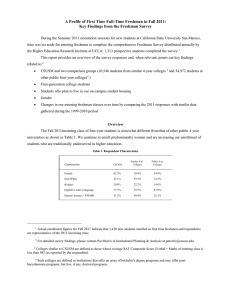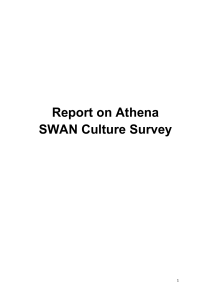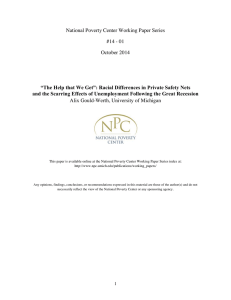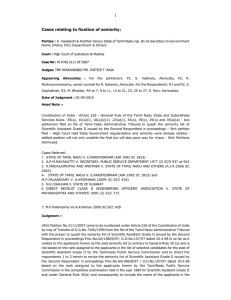UrbanBuzz/ Gender and the Built Environment Baseline Survey/ Analysis
advertisement
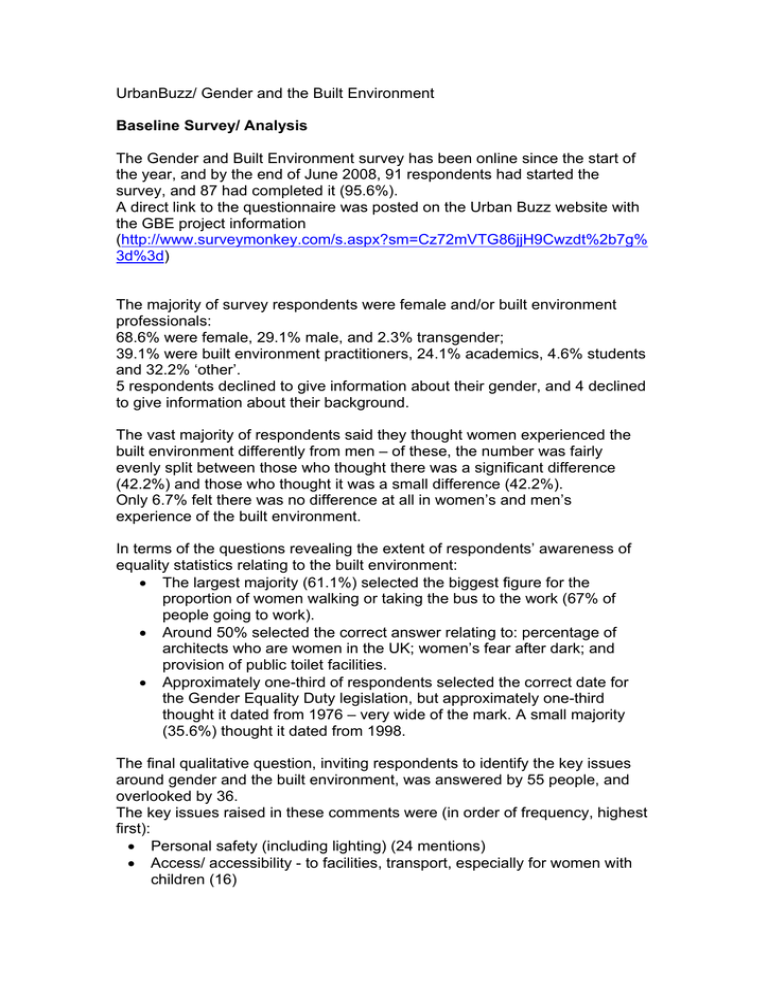
UrbanBuzz/ Gender and the Built Environment Baseline Survey/ Analysis The Gender and Built Environment survey has been online since the start of the year, and by the end of June 2008, 91 respondents had started the survey, and 87 had completed it (95.6%). A direct link to the questionnaire was posted on the Urban Buzz website with the GBE project information (http://www.surveymonkey.com/s.aspx?sm=Cz72mVTG86jjH9Cwzdt%2b7g% 3d%3d) The majority of survey respondents were female and/or built environment professionals: 68.6% were female, 29.1% male, and 2.3% transgender; 39.1% were built environment practitioners, 24.1% academics, 4.6% students and 32.2% ‘other’. 5 respondents declined to give information about their gender, and 4 declined to give information about their background. The vast majority of respondents said they thought women experienced the built environment differently from men – of these, the number was fairly evenly split between those who thought there was a significant difference (42.2%) and those who thought it was a small difference (42.2%). Only 6.7% felt there was no difference at all in women’s and men’s experience of the built environment. In terms of the questions revealing the extent of respondents’ awareness of equality statistics relating to the built environment: • The largest majority (61.1%) selected the biggest figure for the proportion of women walking or taking the bus to the work (67% of people going to work). • Around 50% selected the correct answer relating to: percentage of architects who are women in the UK; women’s fear after dark; and provision of public toilet facilities. • Approximately one-third of respondents selected the correct date for the Gender Equality Duty legislation, but approximately one-third thought it dated from 1976 – very wide of the mark. A small majority (35.6%) thought it dated from 1998. The final qualitative question, inviting respondents to identify the key issues around gender and the built environment, was answered by 55 people, and overlooked by 36. The key issues raised in these comments were (in order of frequency, highest first): • Personal safety (including lighting) (24 mentions) • Access/ accessibility - to facilities, transport, especially for women with children (16) • • • • • • • Scale, aesthetics and detail: issues of psychological/spatial perception, ‘feminisation’ of a male-generated environment (14) Local/ neighbourhood planning and quality of local environment: communities, participation (6) Access/ accessibility – to role/jobs in designing built environment, higher salaries (4) Working arrangements in general: decentralisation of jobs nearer homes (including transport issues), flexible working, and work-life balance (3) Environmentalism per se (1) Need for non-commercial spaces (1) Need for a neutral approach, not gender-orientated (1)



